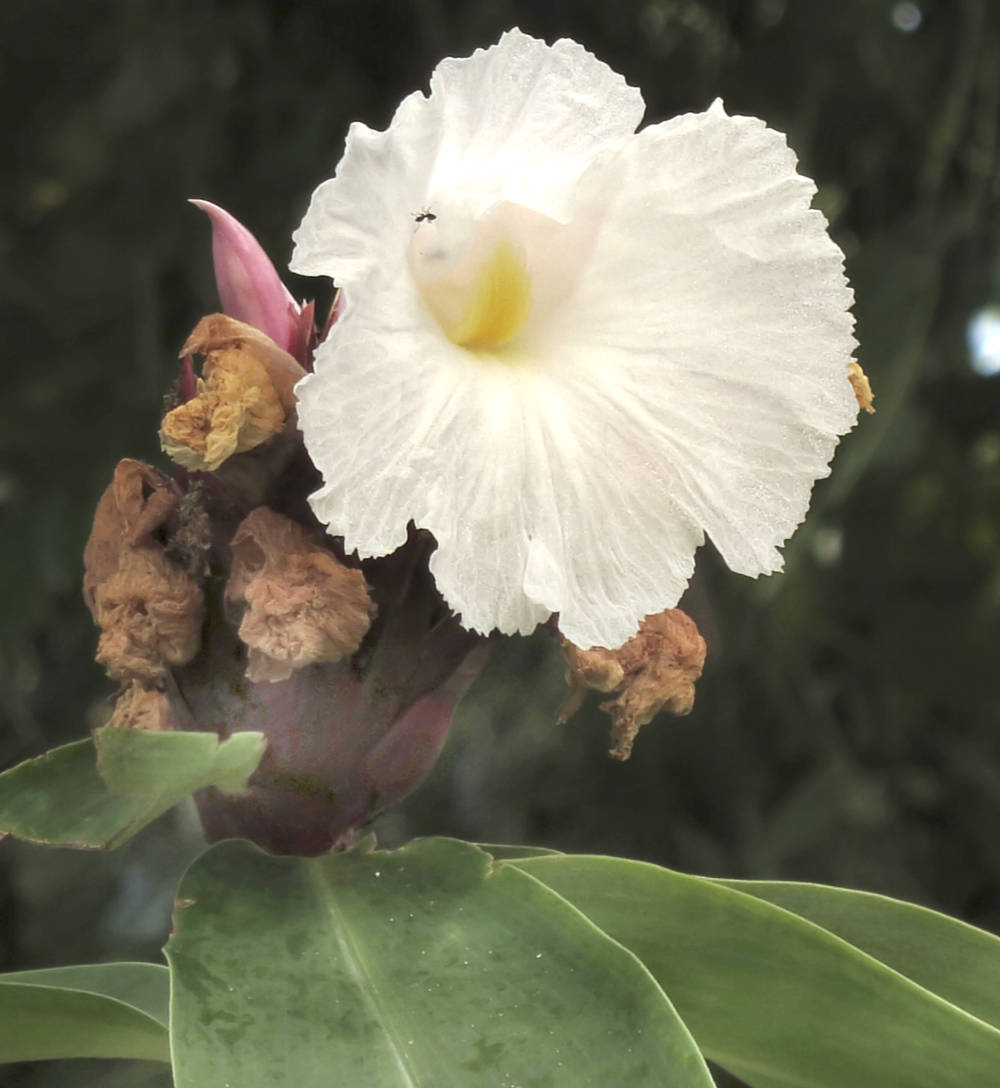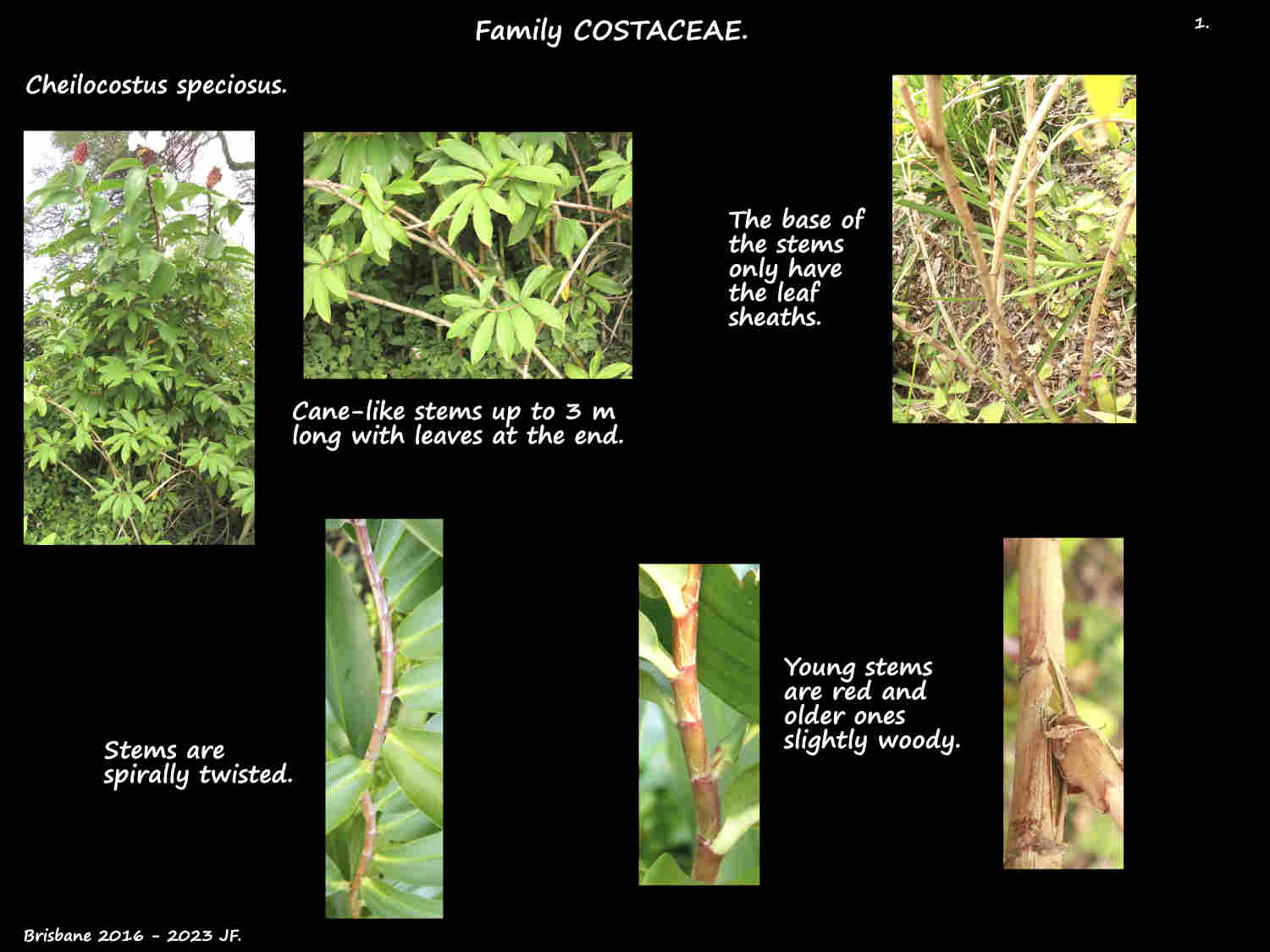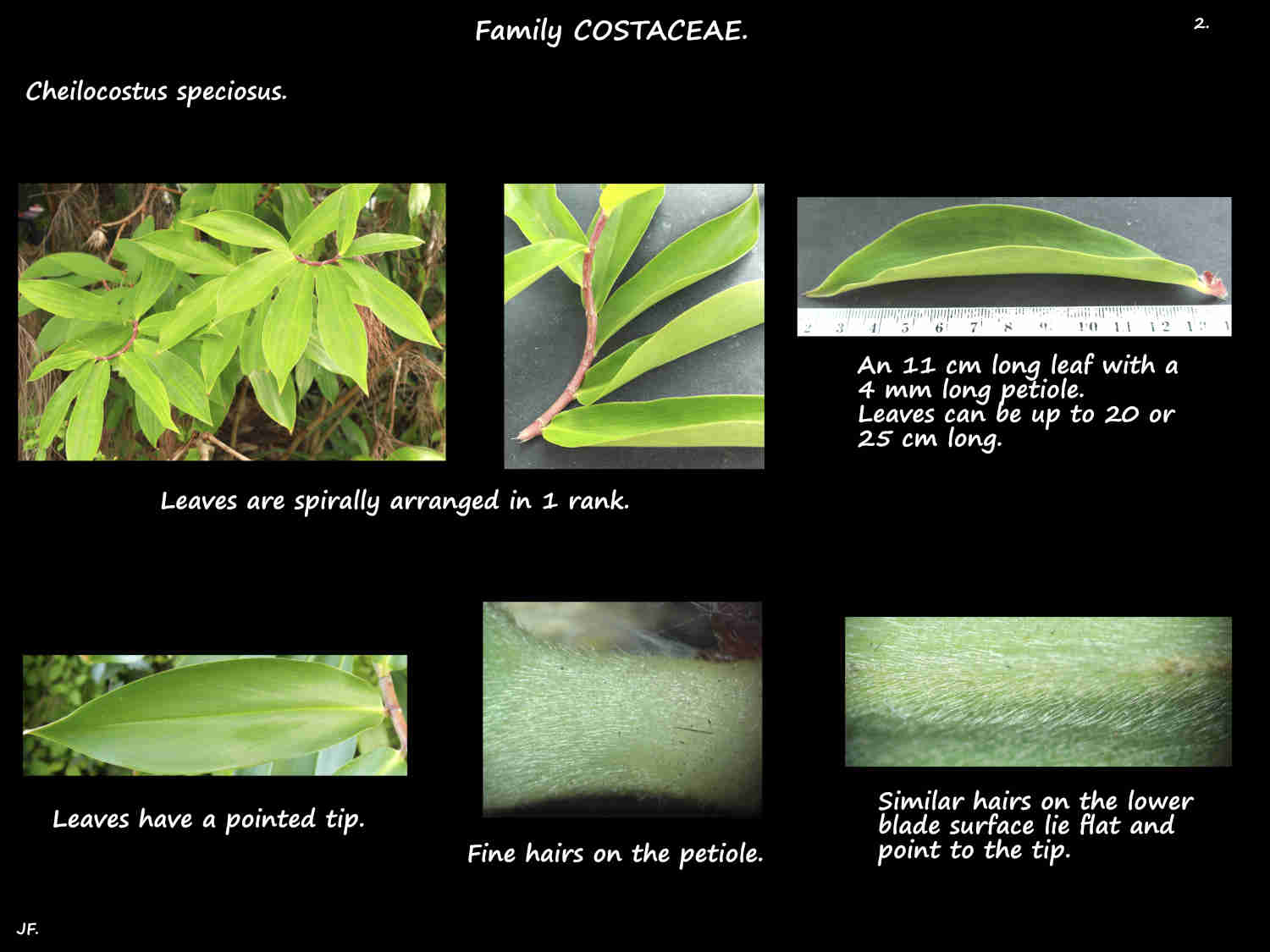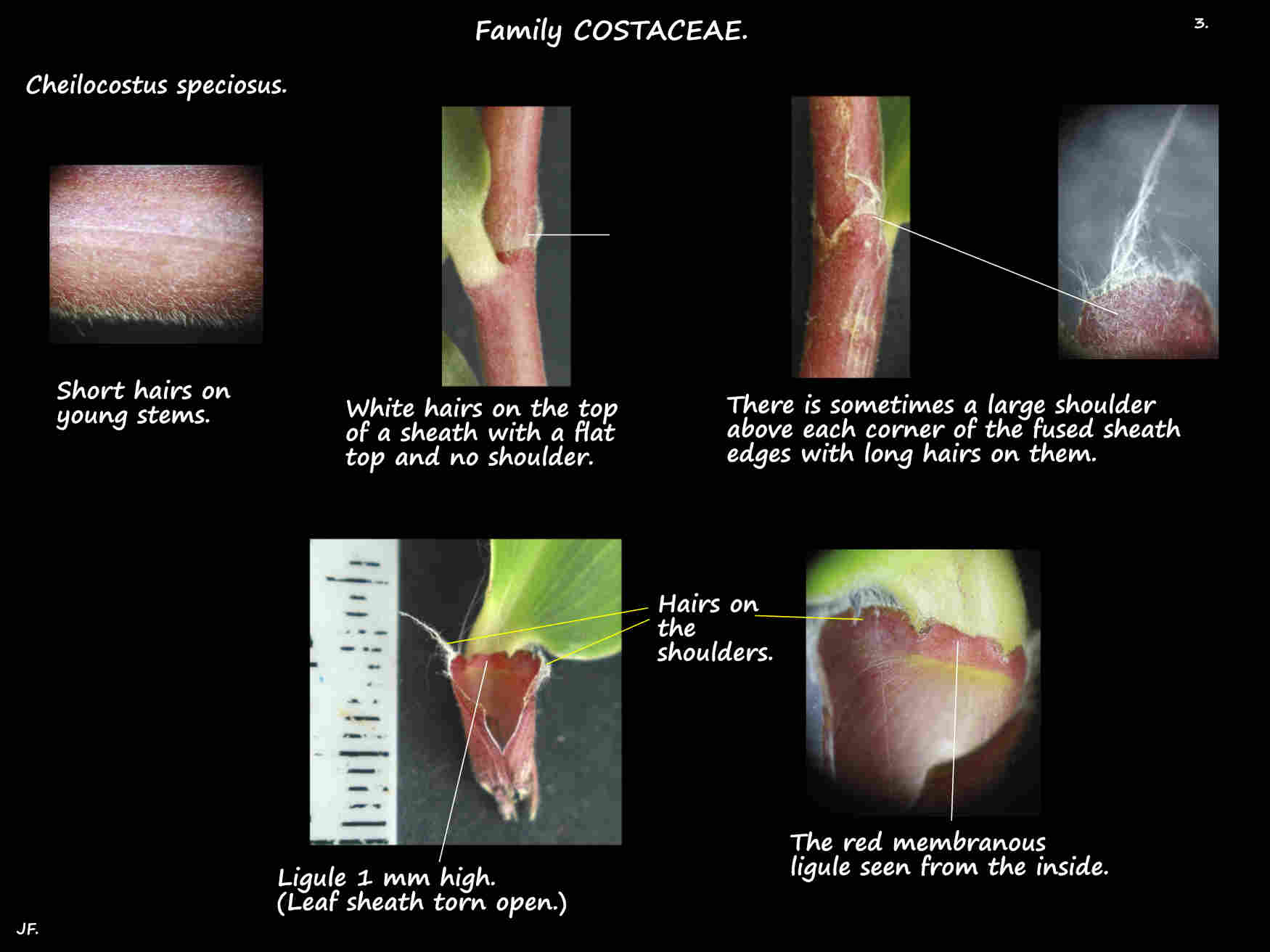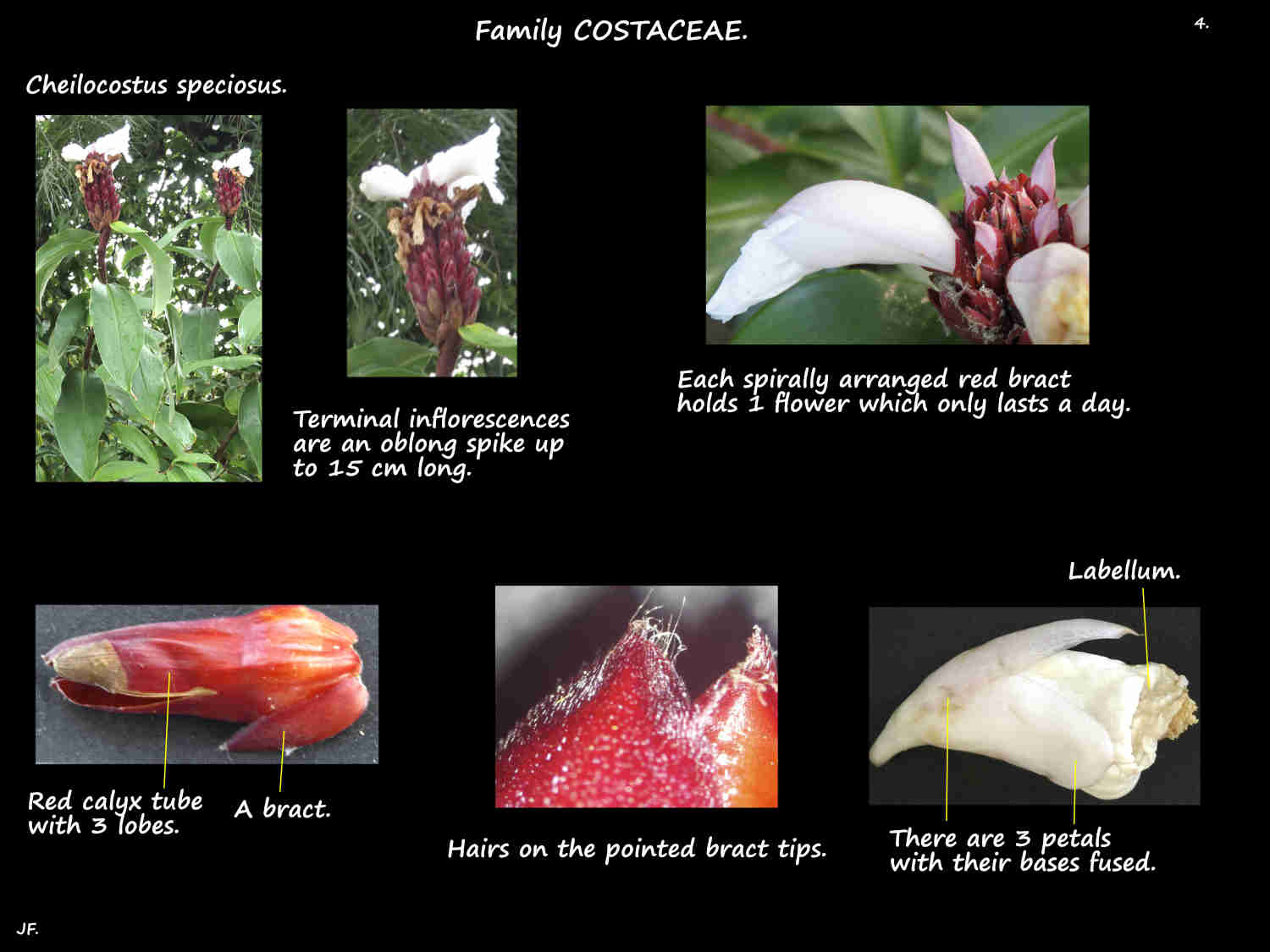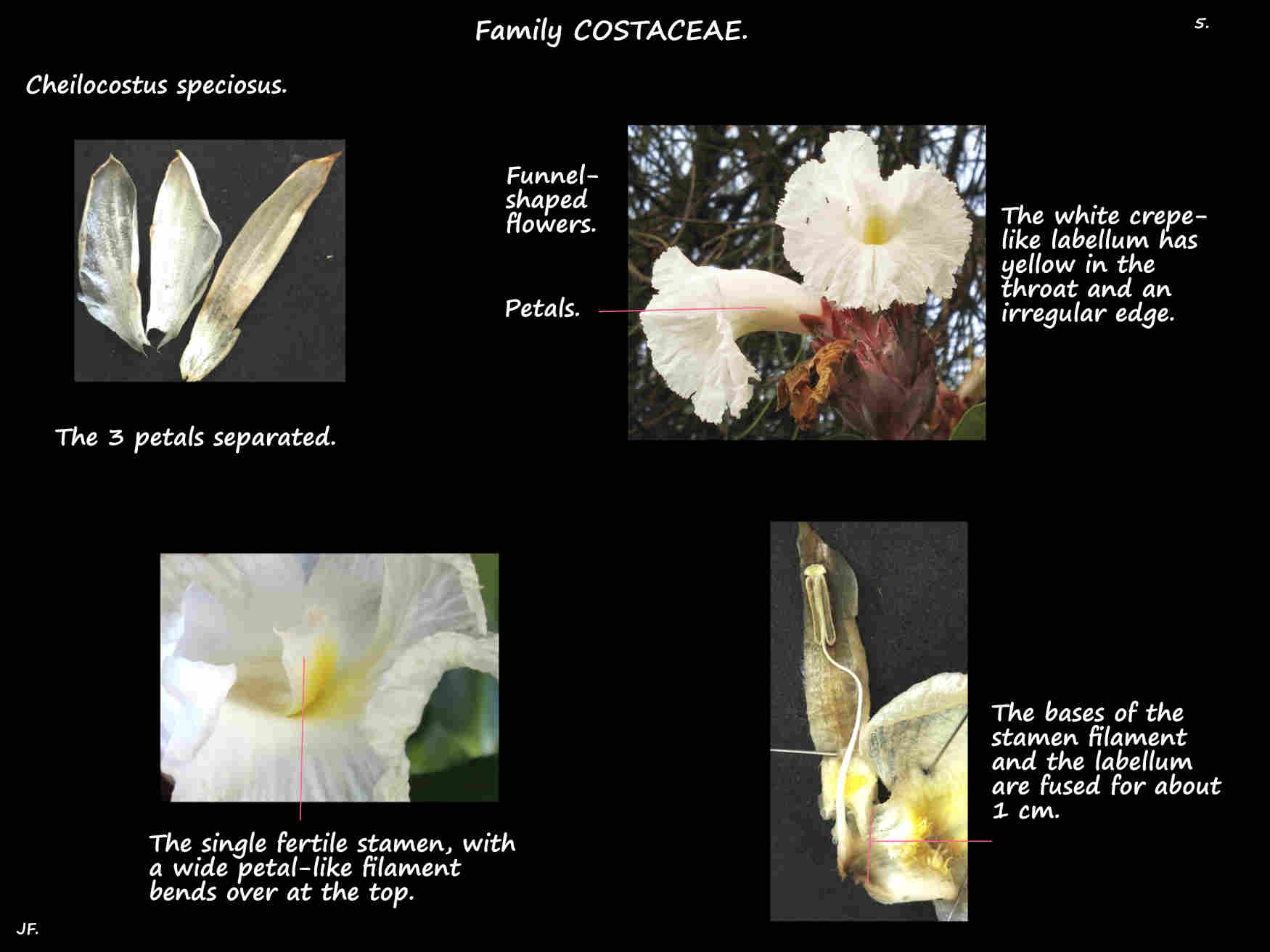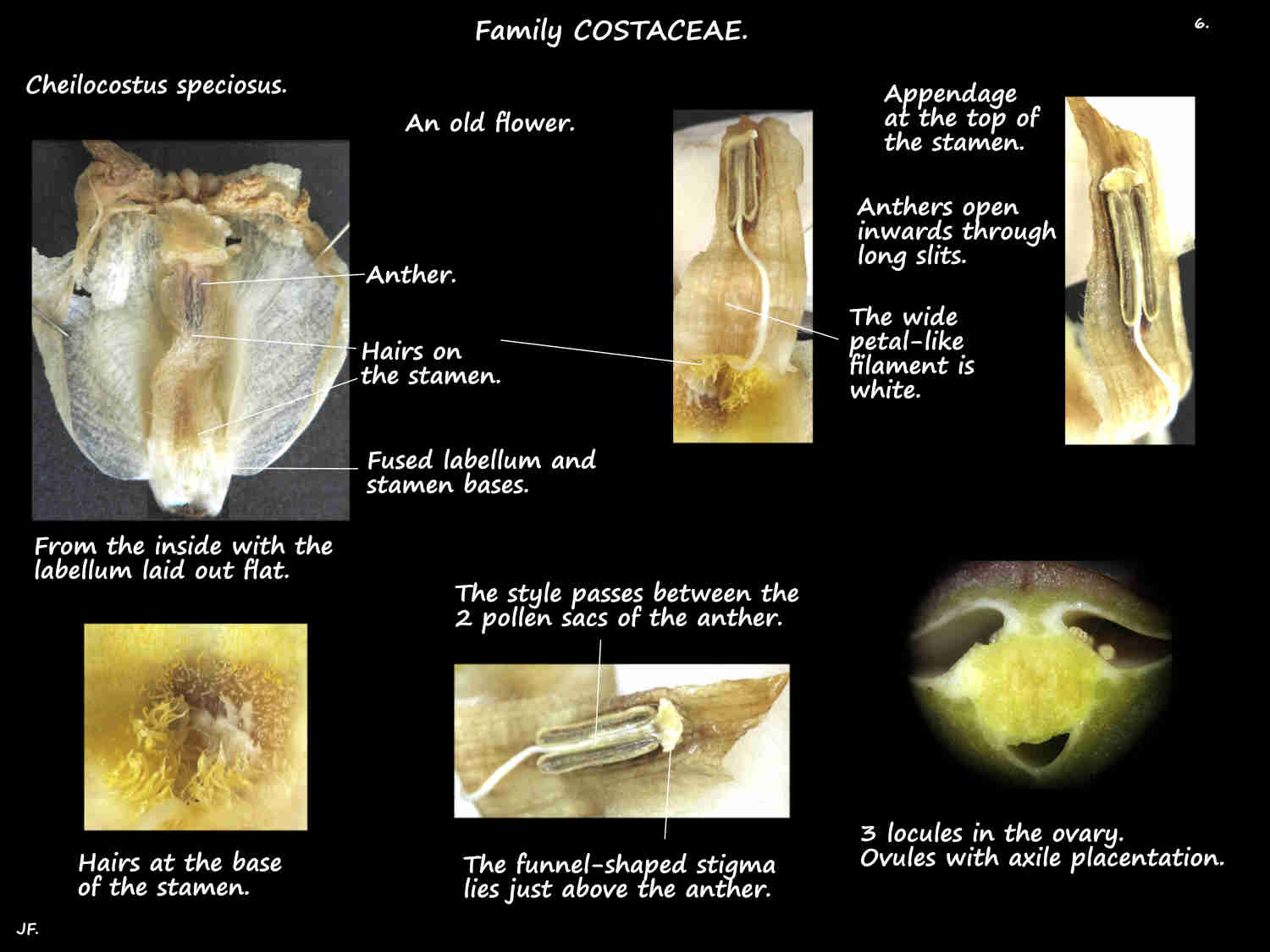Cheilocostus speciosus. (Costus speciosus.)
This plant was originally in the Costus genus and is occasionally seen as such in recent sources.
However it is now most commonly seen in the Cheilocostus genus.
Plants of the World Online has it in the Hellenia genus.
As well as these genera it has been seen in around 8 others.
It is a very variable species with at least 8 varieties described.
Crepe Ginger is a herbaceous perennial plant with underground stems or rhizomes.
It can form dense clumps with erect to arching cane-like stems.
The spirally twisted above ground stems are up to around 3 m long and they may branch.
Young stems are reddish and the older ones become slightly woody.
Leaves, on a petiole a few mms long are spirally arranged towards the end of the stems.
The elliptic blades are up to around 20 cm long and 10 to 15 cm wide.
The long dense hairs underneath are soft and lie flat along the surface.
The leaf sheath and ligule are red and there are long hairs on the top of the sheath.
Inflorescences are terminal on the main stem or occasionally on short side branches.
They are an oblong spike up to 15 cm tall.
The tightly packed and overlapping bracts are spirally arranged.
The leathery 2 cm long bright red bracts are ovate with a hairy pointed tip.
Each bract holds 1 or 2 flowers that have a pale red bracteole up to 1.5 cm long at their base.
The funnel-like flowers have a dark red calyx around 1 to 1.5 cm long.
The bases of the 3 sepals are fused into a tube with 3 lobes.
The stiff darkish red lobes have long soft hairs.
The corolla, around 6 cm long has 3 petals with their bases fused for 1 cm.
There is 1 fertile stamen with a wide white petal-like filament with an orange base.
Up to 4.5 cm long and just over 1 cm wide it has hairs on it.
The labellum is formed by fusion of the infertile stamens or staminodes.
It is obovate with a narrow base and the sides curve in towards each other.
Up to 10 cm long its base is fused to the base of the stamen filament.
The flaring upper section has a crepe-like appearance and small teeth on the edge.
It is white with some yellow (or pink) in the throat.
Varieties are seen with red flowers.
The ovary has 3 locules each with numerous ovules.
The narrow style has a funnel-shaped stigma.
The fruit are slightly woody roughly spherical red capsules around 1.5 cm wide.
The 3 mm black seeds have a fleshy appendage (aril).
J.F
